#spacex-future-missions
Photo

Science fiction. Tragedy of blessings (on Wattpad) https://www.wattpad.com/1385674672-science-fiction-tragedy-of-blessings?utm_source=web&utm_medium=tumblr&utm_content=share_reading&wp_uname=Javid117&wp_originator=zmF9H%2Bouma7YOZqIsRoC%2B8EYwe9hDHNB%2FaYw8PsURvpAv2mTyfkoNvk00ipfDsJQbvOSy5o67tyVbm4Bxl2d587jP12cQJtGZQkDRcc8QCRStRCsHzMNlA8ik9HmanmO This short science fiction is about future space explorations in 2075. Where huge corporations have set up bases in the space and are investing heavily in the extraction of rare metals from asteroids . This short scifi is about a similar assignment taken by the crew of company named Star Titans. They have spotted an asteroid bearing rare metals worth trillions of dollars, and they have called in the experts ( Extreme Risk Takers ) to be launched onto the freely moving asteroid. But things do not go as planned; and how the Extreme Risk Takers survive, is a story that will keep you hooked and thrilled!
#2075#future-space-exploration#short-science-fiction#short-scifi-story#short-story#space-exploration-in-2075#space-exploration-in-future#spacex#spacex-future-launches#spacex-future-missions#spacex-mission-mars#spacex-rockets#technologies-in-2075#wortld-in-2075#books#wattpad#amreading
0 notes
Text
Commercialization and Space Exploration: A New Human Frontier

Overview: The Inception of Space Travel
Humanity has always been fascinated by space exploration. Space has always been associated with limitless possibilities, from the first time we gazed up at the stars to the first time humans set foot on the moon. For many years, only governments and a select group of highly skilled scientists had access to space exploration. But there has been a noticeable change in recent years. Now that private businesses are entering the race, everyone's dream of space travel is getting closer to reality. This piece examines the history of space exploration, the expanding influence of private industry, and the implications for the future.
Government-Led Space Exploration in the Beginning
The Cold War, which saw bitter rivalry between the US and the USSR, is when the history of space exploration first emerged. The space race began in 1957 with the Soviet Union's launch of Sputnik, the first artificial satellite. With swift succession, the US launched its own space missions, and Soviet cosmonaut Yuri Gagarin became the first person to orbit the Earth in 1961.
The successful landing of the first humans on the Moon by NASA's Apollo 11 mission in 1969 stands as the most iconic event of this era. "That's one small step for man, one giant leap for mankind," said astronaut Neil Armstrong, have come to represent the accomplishments of humanity. These missions were motivated by curiosity in science, pride in the country, and the drive to demonstrate one's superiority in technology.
Commercialization's Intensification
For a long time, space exploration was only affordable and feasible for governments. There was a lot of risk involved and this was cutting edge technology. But as technology developed, prices began to decline, ushering in a new era marked by the commercialization of space travel.
Visionary leaders such as Elon Musk, Jeff Bezos, and Richard Branson propelled the emergence of private companies such as SpaceX, Blue Origin, and Virgin Galactic. Space travel became more accessible and economical thanks to the new concepts and advancements these companies brought to the field.
SpaceX's Function: Transforming Space Travel
Elon Musk launched SpaceX in 2002, and it's arguably the most well-known business in the space sector. Musk's ultimate goal is to colonize Mars and wants to make space travel as commonplace as flying. SpaceX has accomplished a number of landmarks that were previously unthinkable.
The Genius Wave (Download)
The Dragon spacecraft was sent to the International Space Station (ISS) by SpaceX in 2012, making it the first private enterprise to do so. They created history once more in 2020 when they launched NASA astronauts on the Crew Dragon spacecraft to the International Space Station (ISS), becoming the first private company to send humans into space.
Reusable rocket development is one of SpaceX's biggest achievements. Due to the one-time nature of traditional rockets, space missions are exceedingly costly. SpaceX has significantly lowered the cost of space travel by developing rockets that can land back on Earth and be reused, creating new opportunities for exploration and commercialization.
Blue Origin: Creating Space Travel Opportunities
Jeff Bezos of Amazon founded Blue Origin, which has a slightly different goal than SpaceX. Blue Origin is committed to bringing space tourism to reality, while SpaceX is focused on exploring other planets. "Step by Step, Ferociously" is the company motto, "Gradatim Ferociter," which embodies its methodical and unwavering approach to accomplishing its objectives.
The New Shepard rocket from Blue Origin is intended to carry tourists on suborbital flights, providing them with a stunning view of Earth from space and a brief period of weightlessness. With Bezos aboard, the company successfully finished its first crewed mission in 2021. This was a big step toward allowing the general public to experience space tourism.
Virgin Galactic: Space Travel's Origins
Founded by Sir Richard Branson, Virgin Galactic is a significant participant in the space tourism sector. The company's SpaceShipTwo spacecraft is intended to transport people on suborbital flights, providing them with an unforgettable space travel experience.
A significant turning point for the company came when Richard Branson himself was among the first passengers to board SpaceShipTwo in July 2021. Virgin Galactic wants to make space travel a reality for people who can afford it by starting frequent commercial flights.

The Advantages of Commercialization in Space
The commercialization of space has numerous advantages for society at large as well as for the participating companies. The following are some of the main benefits:
1. Reduced Prices: The cost of space missions is falling as private companies compete. This increases the accessibility of space exploration for researchers, scientists, and even travelers.
2. Innovation: New methods and concepts for space travel are introduced by private enterprises. Their emphasis on innovation, efficiency, and reusability propels technological
The Genius Wave (Download)
developments that help not just space exploration but also other sectors of the economy.
3. Economic Growth: The space sector is starting to have a major impact on the world economy. From satellite services to space tourism, it opens up new markets, spurs innovation, and generates jobs.
4. International Collaboration: There is a chance for increased cross-national cooperation as space becomes more accessible. Together, nations and businesses can explore space, exchange knowledge, and find solutions to pressing global issues like climate change and natural disasters.
5. Inspiring Future Generations: Young people are motivated to pursue careers in science, technology, engineering, and mathematics (STEM) by the accomplishments of private space companies. This contributes to the development of a workforce that will be able to handle important problems like space exploration in the future.
The Commercialization of Space Faces Difficulties
Although the commercialization of space has numerous advantages, there are also major obstacles to overcome:
1. Space Debris: The quantity of debris in space is growing as more businesses launch satellites and spacecraft. Other satellites and spacecraft are at risk from space debris, which could result in collisions and damage.
2. Legal and Regulatory Issues: International laws and regulations have not kept up with the space industry's explosive growth. Unresolved issues include property rights in space, responsibility for mishaps, and the militarization of space.
3. Environmental Concerns: The use of hazardous materials and carbon emissions from rocket launches and spacecraft production have an impact on the environment. These environmental issues will need to be addressed as space travel becomes more widespread.
4. Accessibility and Inequality: Although space travel is getting closer to becoming a reality, only the wealthy can afford it. Space runs the risk of turning into a playground for the wealthy, escalating already-existing disparities.
5. Ethical Issues: The prospect of settling other worlds presents moral dilemmas regarding our obligation to those ecosystems. as well as any possible effects on living things already in existence.
Space Exploration and Commercialization's Future
It's very exciting to see what space exploration and commerce will bring. The private sector is
The Genius Wave (Download)
contributing to the rapid pace of innovation and the daily emergence of new opportunities. Here are a few prospective developments to be aware of:
1. Mars Colonization: Within the next few decades, SpaceX's audacious plan to establish a human colony on Mars may come to pass. This would represent a significant milestone in human history and present new opportunities for extraterrestrial exploration and survival.
2. Space Travel for Everyone: As costs come down and technology improves, more people may be able to afford space travel. Businesses like Virgin Galactic, SpaceX, and Blue Origin are laying the groundwork for this emerging sector of the economy and enabling regular people to enjoy the wonders of space travel.
3. Space Mining: It's becoming more feasible to imagine mining asteroids for precious materials like metals, minerals, and water. Businesses such as Planetary Resources are investigating the possibilities of space mining, which has the potential to transform terrestrial industries and supply vital resources for upcoming space expeditions.
4. Lunar Bases: NASA and other space organizations are organizing missions to build long-term lunar bases. These bases might act as stepping stones for future Mars research. and beyond, offering a venue for academic study and business endeavors.
5. Developments in Satellite Technology: Communication, navigation, weather forecasting, and environmental monitoring all depend heavily on satellites. We may anticipate seeing ever more sophisticated and powerful satellites as the space industry develops, which will enhance our knowledge of and capacity to safeguard Earth.

In summary: A New Humanity in an Era
Humanity is entering a new era with the exploration and commercialization of space. Thanks to the efforts of private companies and forward-thinking leaders, what was once the domain of science fiction is now becoming a reality. There are countless options, from visiting far-off planets to enabling universal access to space travel. But as we travel farther into space, we also need to deal with the difficulties and moral issues that with this novel frontier.
Space has a bright future ahead of it, with probably unheard-of breakthroughs in technology, exploration, and universe understanding over the next few decades. Space exploration will inspire and enhance life on Earth while also benefiting those who travel beyond our planet as we continue to push the envelope of what is feasible.
The Genius Wave (Download)
#Space Tourism#Reusable Rockets#Mars Colonization#SpaceX Starship#Lunar Gateway#Future of Space Exploration#SpaceX and Innovation#Space Startups#Ethics of Space Colonization#Private vs. Government Space Missions
0 notes
Text
"SpaceX Makes History with Successful Launch of Starship Rocket"
On April 20th, 2023, SpaceX successfully launched its Starship rocket on a historic mission, marking a major milestone in the company’s efforts to send humans to Mars and beyond. The mission was the first-ever crewed flight of the Starship, and it took off from the company’s launch site in Boca Chica, Texas.
Introduction
Space exploration has always fascinated humankind, and the quest to…
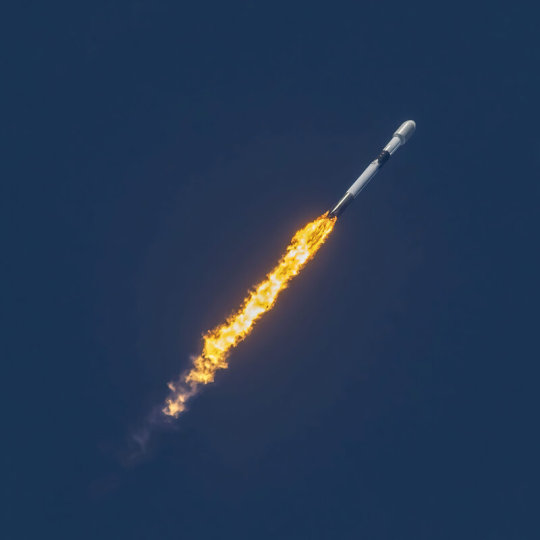
View On WordPress
#aerospace industry#Elon Musk#future#historic mission#launch#Mars colonization#reusable rockets#space exploration#space technology#space tourism#space travel#SpaceX#Starship rocket
0 notes
Text

9 Out-of-This-World Moments for Space Communications & Navigation in 2023
How do astronauts and spacecraft communicate with Earth?
By using relay satellites and giant antennas around the globe! These tools are crucial to NASA’s space communications networks: the Near Space Network and the Deep Space Network, which bring back science and exploration data every day.
It’s been a great year for our space communications and navigation community, who work to maintain the networks and enhance NASA’s capabilities. Keep scrolling to learn more about our top nine moments.

The SpaceX Falcon 9 rocket carrying the Dragon spacecraft lifts off from Launch Complex 39A at NASA's Kennedy Space Center in Florida on Thursday, Nov. 9, 2023, on the company's 29th commercial resupply services mission for the agency to the International Space Station. Liftoff was at 8:28 p.m. EST.
1. In November, we launched a laser communications payload, known as ILLUMA-T, to the International Space Station. Now, ILLUMA-T and the Laser Communications Relay Demonstration (LCRD) are exchanging data and officially complete NASA’s first two-way, end-to-end laser relay system. Laser communications can send more data at once than traditional radio wave systems – think upgrading from dial-up to fiber optic internet. ILLUMA-T and LCRD are chatting at 1.2 gigabits per second (Gbps). At that rate, you could download an average movie in under a minute.
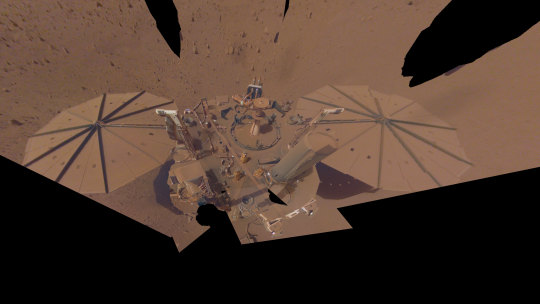
NASA’s InSight lander captured this selfie on Mars on April 24, 2022, the 1,211th Martian day, or sol, of the mission.
2. Data analyzed in 2023 from NASA’s retired InSight Mars lander provided new details about how fast the Red Planet rotates and how much it wobbles. Scientists leveraged InSight’s advanced radio technology, upgrades to the Deep Space Network, and radio signals to determine that Mars’ spin rate is increasing, while making the most precise measurements ever of Mars’ rotation.
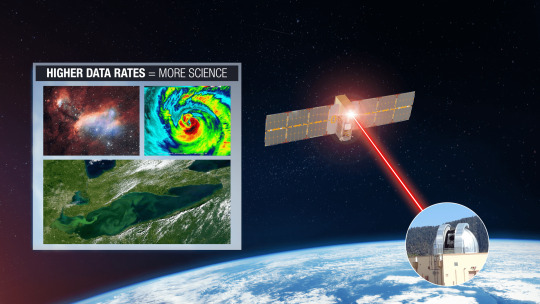
TBIRD is demonstrating a direct-to-Earth laser communications link from low Earth orbit to a ground station on Earth.
3. We set a new high record! The TeraByte InfraRed Delivery (TBIRD) payload – also demonstrating laser communications like ILLUMA-T and LCRD – downlinked 4.8 terabytes of data at 200 Gbps in a single 5-minute pass. This is the highest data rate ever achieved by laser communications technology. To put it in perspective a single terabyte is the equivalent of about 500 hours of high-definition video.
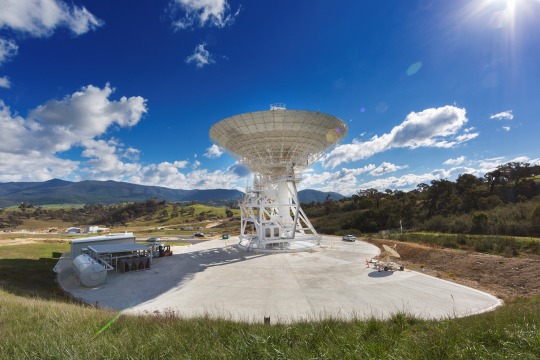
A 34-meter (112-foot) wide antenna at Canberra Deep Space Communications Complex near Canberra, Australia.
4. This year we celebrated the Deep Space Network’s 60th anniversary. This international array of antennas located at three complexes in California, Spain, and Australia allow us to communicate with spacecraft at the Moon and beyond. Learn more about the Deep Space Network’s legacy and future advancements.
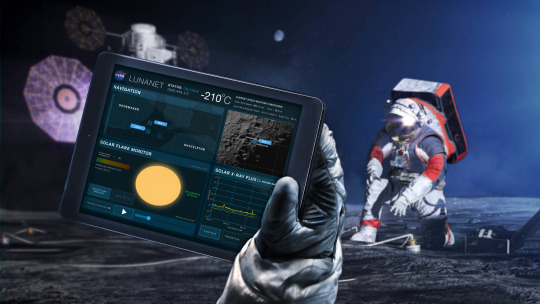
An illustration of the LunaNet architecture. LunaNet will bring internet-like services to the Moon.
5. We are bringing humans to the Moon with Artemis missions. During expeditions, astronauts exploring the surface are going to need internet-like capabilities to talk to mission control, understand their routes, and ensure overall safety. The space comm and nav group is working with international partners and commercial companies to develop LunaNet, and in 2023, the team released Draft LunaNet Specification Version 5, furthering development.
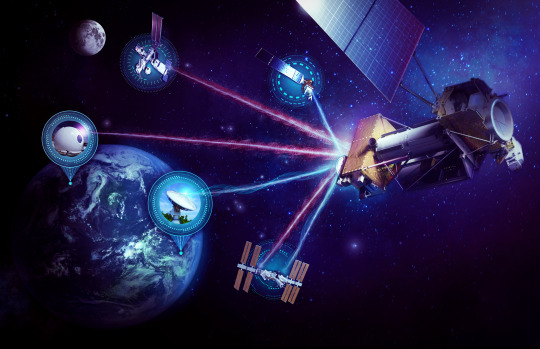
The High-Rate Delay Tolerant Networking node launched to the International Space Station in November and will act as a high-speed path for data.
6. In addition to laser communications, ILLUMA-T on the International Space Station is also demonstrating high-rate delay/disruption tolerant networking (HDTN). The networking node is showcasing a high-speed data path and a store-and-forward technique. HDTN ensures data reaches its final destination and isn’t lost on its path due to a disruption or delay, which are frequent in the space environment.

The Communications Services Project (CSP) partners with commercial industry to provide networking options for future spaceflight missions.
7. The space comm and nav team is embracing the growing aerospace industry by partnering with commercial companies to provide multiple networking options for science and exploration missions. Throughout 2023, our commercialization groups engaged with over 110 companies through events, one-on-one meetings, forums, conferences, and more. Over the next decade, NASA plans to transition near-Earth services from government assets to commercial infrastructure.

Middle and high school students solve a coding experiment during NASA's Office of STEM Engagement App Development Challenge.
8. Every year, NASA’s Office of STEM Engagement sponsors the App Development Challenge, wherein middle and high school students must solve a coding challenge. This year, student groups coded an application to visualize the Moon’s South Pole region and display information for navigating the Moon’s surface. Our space communications and navigation experts judged and interviewed students about their projects and the top teams visited NASA’s Johnson Space Center in Houston!
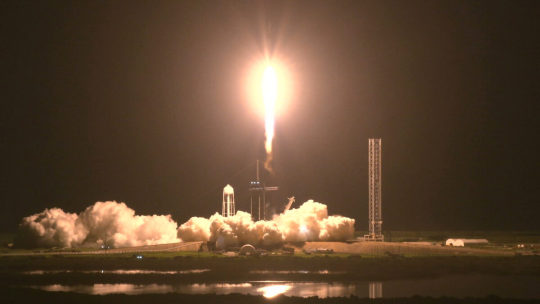
A SpaceX Falcon 9 rocket soars upward after liftoff at the pad at 3:27 a.m. EDT on Saturday, Aug. 26, from Kennedy Space Center’s Launch Complex 39A in Florida carrying NASA’s SpaceX Crew-7 crew members to the International Space Station. Aboard SpaceX’s Dragon spacecraft are NASA astronaut Jasmin Moghbeli, ESA (European Space Agency) astronaut Andreas Mogensen, JAXA (Japan Aerospace Exploration Agency) astronaut Satoshi Furukawa, and Roscosmos cosmonaut Konstantin Borisov.
9. The Near Space Network supported 19 launches in 2023! Launches included Commercial Crew flights to the International Space Station, science mission launches like XRISM and the SuperBIT balloon, and many more. Once in orbit, these satellites use Near Space Network antennas and relays to send their critical data to Earth. In 2023, the Near Space Network provided over 10 million minutes of communications support to missions in space.
Here’s to another year connecting Earth and space.
Make sure to follow us on Tumblr for your regular dose of space!
1K notes
·
View notes
Text
Personal Fic Collection (VLD)
Part 5 of 5
Part 1, Part 2, Part 3, Part 4, Part 5
I Feel Safe Now (You Found Me) by IcyPanther
spacex t-shirt by soulreapin
A Dish Served Cold by Rueitae
let your waves crash down on me (and take me away) by angstinspace
The Ones Who Walk Away… by LilacPessimism
We Keep This Love in a Photograph by thisfairytalegonebad
incongruity by skyview
growing pains by torturedpercy
Half the Galaxy by heavily_caffeinated
hear no evil by zenith_txt
Black, Yellow, Blue, Green, Orange, Pink… Red by actress4him
Subject 01-Omega: An Incomplete Case Study by pronz69
Keep Holding On by alubanana
Not So Weightless by truelovetakesawhile
kosmo’s mission by adelfie
hot as hell by ShatterinSeconds
Recoil/Release by Cheshyr
Teething by ninjawrites
A Reality that Almost Happened by Callaeidae3
Please Leave Your Message After the Tone by SilenceIsGolden15
Last part for now, but there may be more in the future! ✨✨
#voltron legendary defender#voltron#vld#voltron fandom#voltron fanfic#ao3 link#archive of our own#ao3#ao3 fanfic
13 notes
·
View notes
Text

STARSHIPS ARE MEANT TO FLY
SpaceX was founded in 2002 to expand access to outer space. Not just for government or traditional satellite operators, but for new participants around the globe. Today, we’re flying at an unprecedented pace as the world’s most active launch services provider. SpaceX is safely and reliably launching astronauts, satellites, and other payloads on missions benefiting life on Earth and preparing humanity for our ultimate goal: to explore other planets in our solar system and beyond.
Starship is paramount to making that sci-fi future, along with a growing number of U.S. national priorities, a reality. It is the largest and most powerful space transportation system ever developed, and its fully and rapidly reusable design will exponentially increase humanity’s ability to access and utilize outer space. Full reusability has been an elusive goal throughout the history of spaceflight, piling innumerable technical challenges on what is already the most difficult engineering pursuit in human existence. It is rocket science, on ludicrous mode.
Every flight of Starship has made tremendous progress and accomplished increasingly difficult test objectives, making the entire system more capable and more reliable. Our approach of putting flight hardware in the flight environment as often as possible maximizes the pace at which we can learn recursively and operationalize the system. This is the same approach that unlocked reuse on our Falcon fleet of rockets and made SpaceX the leading launch provider in the world today.
To do this and do it rapidly enough to meet commitments to national priorities like NASA’s Artemis program, Starships need to fly. The more we fly safely, the faster we learn; the faster we learn, the sooner we realize full and rapid rocket reuse. Unfortunately, we continue to be stuck in a reality where it takes longer to do the government paperwork to license a rocket launch than it does to design and build the actual hardware. This should never happen and directly threatens America’s position as the leader in space.

FLIGHT 5
The Starship and Super Heavy vehicles for Flight 5 have been ready to launch since the first week of August. The flight test will include our most ambitious objective yet: attempt to return the Super Heavy booster to the launch site and catch it in mid-air.
This will be a singularly novel operation in the history of rocketry. SpaceX engineers have spent years preparing and months testing for the booster catch attempt, with technicians pouring tens of thousands of hours into building the infrastructure to maximize our chances for success. Every test comes with risk, especially those seeking to do something for the first time. SpaceX goes to the maximum extent possible on every flight to ensure that while we are accepting risk to our own hardware, we accept no compromises when it comes to ensuring public safety.
It's understandable that such a unique operation would require additional time to analyze from a licensing perspective. Unfortunately, instead of focusing resources on critical safety analysis and collaborating on rational safeguards to protect both the public and the environment, the licensing process has been repeatedly derailed by issues ranging from the frivolous to the patently absurd. At times, these roadblocks have been driven by false and misleading reporting, built on bad-faith hysterics from online detractors or special interest groups who have presented poorly constructed science as fact.
We recently received a launch license date estimate of late November from the FAA, the government agency responsible for licensing Starship flight tests. This is a more than two-month delay to the previously communicated date of mid-September. This delay was not based on a new safety concern, but instead driven by superfluous environmental analysis. The four open environmental issues are illustrative of the difficulties launch companies face in the current regulatory environment for launch and reentry licensing.

STEEL AND WATER
Starship’s water-cooled steel flame deflector has been the target of false reporting, wrongly alleging that it pollutes the environment or has operated completely independent of regulation. This narrative omits fundamental facts that have either been ignored or intentionally misinterpreted.
At no time did SpaceX operate the deflector without a permit. SpaceX was operating in good faith under a Multi-Sector General Permit to cover deluge operations under the supervision of the Texas Commission on Environmental Quality (TCEQ). SpaceX worked closely with TCEQ to incorporate numerous mitigation measures prior to its use, including the installation of retention basins, construction of protective curbing, plugging of outfalls during operations, and use of only potable (drinking) water that does not come into contact with any industrial processes. A permit number was assigned and made active in July 2023. TCEQ officials were physically present at the first testing of the deluge system and given the opportunity to observe operations around launch.
The water-cooled steel flame deflector does not spray pollutants into the surrounding environment. Again, it uses literal drinking water. Outflow water has been sampled after every use of the system and consistently shows negligible traces of any contaminants, and specifically, that all levels have remained below standards for all state permits that would authorize discharge. TCEQ, the FAA, and the U.S. Fish and Wildlife Service evaluated the use of the system prior to its initial use, and during tests and launch, and determined it would not cause environmental harm.
When the EPA issued its Administrative Order in March 2024, it was done before seeking a basic understanding of the facts of the water-cooled steel flame deflector’s operation or acknowledgement that we were operating under the Texas Multi-Sector General Permit. After meeting with the EPA—during which the EPA stated their intent was not to stop testing, preparation, or launch operations—it was decided that SpaceX should apply for an individual discharge permit. Despite our previous permitting, which was done in coordination with TCEQ, and our operation having little to nothing in common with industrial waste discharges covered by individual permits, we applied for an individual permit in July 2024.
The subsequent fines levied on SpaceX by TCEQ and the EPA are entirely tied to disagreements over paperwork. We chose to settle so that we can focus our energy on completing the missions and commitments that we have made to the U.S. government, commercial customers, and ourselves. Paying fines is extremely disappointing when we fundamentally disagree with the allegations, and we are supported by the fact that EPA has agreed that nothing about the operation of our flame deflector will need to change. Only the name of the permit has changed.

GOOD STEWARD
No launch site operates in a vacuum. As we have built up capacity to launch and developed new sites across the country, we have always been committed to public safety and mitigating impacts to the environment. At Starbase, we implement an extensive list of mitigations developed with federal and state agencies, many of which require year-round monitoring and frequent updates to regulators and consultation with independent biological experts. The list of measures we take just for operations in Texas is over two hundred items long, including constant monitoring and sampling of the short and long-term health of local flora and fauna. The narrative that we operate free of, or in defiance of, environmental regulation is demonstrably false.
Environmental regulations and mitigations serve a noble purpose, stemming from common-sense safeguards to enable progress while preventing undue impact to the environment. However, with the licensing process being drawn out for Flight 5, we find ourselves delayed for unreasonable and exasperating reasons.
On Starship’s fourth flight, the top of the Super Heavy booster, commonly known as the hot-stage, was jettisoned to splash down on its own in the Gulf of Mexico. The hot-stage plays an important part in protecting the booster during separation from Starship’s upper stage before detaching during the booster’s return flight. This operation was analyzed thoroughly ahead of Starship’s fourth flight, specifically focused on any potential impact to protected marine species. Given the distribution of marine animals in the specific landing area and comparatively small size of the hot-stage, the probability of a direct impact is essentially zero. This is something previously determined as standard practice by the FAA and the National Marine Fisheries Service for the launch industry at large, which disposes of rocket stages and other hardware in the ocean on every single launch, except of course, for our own Falcon rockets which land and are reused. The only proposed modification for Starship’s fifth flight is a marginal change in the splashdown location of the hot-stage which produces no increase in likelihood for impacting marine life. Despite this, the FAA leadership approved a 60-day consultation with the National Marine Fisheries Service. Furthermore, the mechanics of these types of consultations outline that any new questions raised during that time can reset the 60-day counter, over and over again. This single issue, which was already exhaustively analyzed, could indefinitely delay launch without addressing any plausible impact to the environment.
Another unique aspect to Starship’s fifth flight and a future return and catch of the Super Heavy booster will be the audible sonic booms in the area around the return location. As we’ve previously noted, the general impact to those in the surrounding area of a sonic boom is the brief thunder-like noise. The FAA, in consultation with the U.S. Fish and Wildlife Service, evaluated sonic booms from the landing of the Super Heavy and found no significant impacts to the environment. Although animals exposed to the sonic booms may be briefly startled, numerous prior studies have shown sonic booms of varying intensity have no detrimental effect on wildlife. Despite this documented evidence, the FAA leadership approved an additional 60-day consultation with U.S. Fish and Wildlife as a slightly larger area could experience a sonic boom.
Lastly, the area around Starbase is well known as being host to various protected birds. SpaceX already has extensive mitigations in place and has been conducting biological monitoring for birds near Starbase for nearly 10 years. The protocol for the monitoring was developed with U.S. Fish and Wildlife service, and is conducted by professional, qualified, independent biologists. To date, the monitoring has not shown any population-level impacts to monitored bird populations, despite unsubstantiated claims to the contrary that the authors themselves later amended. Even though Starship’s fifth flight will take place outside of nesting season, SpaceX is still implementing additional mitigations and monitoring to minimize impacts to wildlife, including infrared drone surveillance pre- and post-launch to track nesting presence. We are also working with USFWS experts to assess deploying special protection measures prior to launches during bird nesting season.
SpaceX is committed to minimizing impact and enhancing the surrounding environment where possible. One of our proudest partnerships in South Texas is with Sea Turtle Inc, a local nonprofit dedicated to sea turtle conservation. SpaceX assists with finding and transporting injured sea turtles to their facilities for treatment. SpaceX has also officially adopted Boca Chica Beach through the Texas General Lands Office Adopt a Beach Program, with the responsibility of picking up litter and promoting a litter-free environment. SpaceX sponsors and participates in quarterly beach cleanups as well as quarterly State Highway 4 cleanups. SpaceX has removed hundreds of pounds of trash from the beach and State Highway 4 over the last several years. SpaceX also fosters environmental education at the local level by hosting school tours as well as an Annual Environmental Education Day with Texas Parks and Wildlife, U.S. Fish and Wildlife Service, National Park Service, and Sea Turtle Inc.
TO FLY
Despite a small, but vocal, minority of detractors trying to game the regulatory system to obstruct and delay the development of Starship, SpaceX remains committed to the mission at hand. Our thousands of employees work tirelessly because they believe that unlimited opportunities and tangible benefits for life on Earth are within reach if humanity can fundamentally advance its ability to access space. This is why we’re committed to continually pushing the boundaries of spaceflight, with a relentless focus on safety and reliability.
Because life will be multiplanetary, and will be made possible by the farsighted strides we take today.
9 notes
·
View notes
Text


The United States has returned to the lunar surface for the first time in more than 50 years after a privately-built spacecraft named Odysseus capped a nail-biting 73-minute descent from orbit with a touchdown near the moon’s south pole.
Amid celebrations of what NASA hailed “a giant leap forward,” there was no immediate confirmation of the status or condition of the lander, other than it had reached its planned landing site at crater Malapert A.
But later Intuitive Machines, the Texas-based company that built the first commercial craft to land on the moon, said the craft was “upright and starting to send data.”
The statement on X said mission managers were “working to downlink the first images from the lunar surface.”
The so-called “soft landing” on Thursday, which Steve Altemus, the company’s founder, had given only an 80% chance of succeeding, was designed to open a new era of lunar exploration as NASA works towards a scheduled late-2026 mission to send humans back there.
“Welcome to the moon,” Altemus said when touchdown when the 5.23pm touchdown was eventually confirmed, after about 10 minutes in which Odysseus was out of contact.
It was the first time any US-built spacecraft had landed on the moon since NASA’s most recent crewed visit, the Apollo 17 mission in December 1972, and the first visit by commercial vehicle following last month’s failure of Peregrine One, another partnership between the space agency and a private company, Astrobotic.
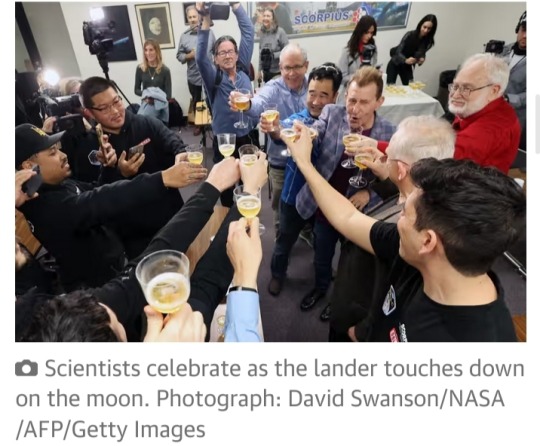
“Today, for the first time in more than a half century, the US has returned to the moon. Today, for the first time in the history of humanity, a commercial company, an American company, launched and led the voyage up there,” Bill Nelson, the NASA administrator, said.
“What a triumph. Odysseus has taken the moon. This feat is a giant leap forward for all of humanity.”
There was no video of Odysseus’s fully autonomous descent, which slowed to about 2.2mph at 33ft above the surface.
But a camera built by students at Florida’s Embry-Riddle Aeronautical University was designed to fall and take pictures immediately before touchdown, and NASA cameras were set to photograph the ground from the spacecraft.
The 14ft (4.3 metres) hexagonal, six-legged Nova-C lander, affectionately nicknamed Odie by Intuitive Machines employees, is part of NASA’s commercial lunar payload services (CLPS) initiative in which the agency awards contracts to private partners, largely to support the Artemis program.
NASA contributed $118m to get it off the ground, with Intuitive Machines funding a further $130m ahead of its February 15 launch from Florida’s Kennedy Space Center on a Falcon 9 rocket from Elon Musk’s SpaceX company.

The IM-1 mission, like the doomed Peregrine effort, is carrying a payload of scientific equipment designed to gather data about the lunar environment, specifically in the rocky region chosen as the landing site for NASA’s crewed Artemis III mission planned for two years’ time.
It is a hazardous area – “pockmarked with all of these craters,” according to Nelson – but chosen because it is believed to be rich in frozen water that could help sustain a permanent lunar base crucial to future human missions to Mars.
Scientists announced last year that they believed tiny glass beads strewn across the moon’s surface contained potentially “billions of tonnes of water” that could be extracted and used on future missions.
The risks are worth it, Nelson told CNN on Thursday, “to see if there is water in abundance. Because if there’s water, there’s rocket fuel: hydrogen, and oxygen. And we could have a gas station on the south pole of the moon.”
The planned operational life of the solar powered lander is only seven days, before the landing site about 186 miles from the moon’s south pole moves into Earth’s shadow.
But NASA hopes that will be long enough for analysis of how soil there reacted to the impact of the landing.
Other instruments will focus on space weather effects on the lunar surface, while a network of markers for communication and navigation will be deployed.
“Odysseus, powered by a company called Intuitive Machines, launched upon a SpaceX rocket, carrying a bounty of NASA scientific instruments, is bearing the dream of a new adventure in science, innovation, and American leadership in space,” Nelson said.
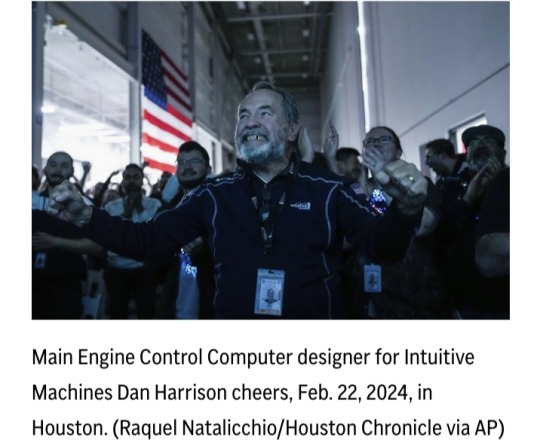
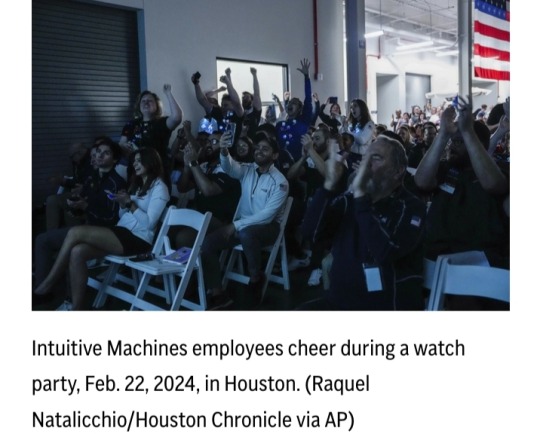
Through Artemis, NASA’s return-to-the-moon program that also has longer-term visions of crewed missions to Mars within the next two decades, the US seeks to stay ahead of Russia and China, both of which are planning their own human lunar landings.
Only the US has previously landed astronauts in six Apollo missions between 1969 and 1972, while five countries have placed uncrewed spacecraft there.
Japan joined the US, Russia, China, and India last month when its Smart Lander for Investigating the Moon (Slim) made a successful, if awkward touchdown after a three-month flight.
Two further Intuitive Machines launches are scheduled for later this year, including an ice drill to extract ingredients for rocket fuel, and another Nova-C lander containing a small Nasa rover and four small robots that will explore surface conditions.
https://www.theguardian.com/science/2024/feb/22/us-moon-landing-odysseus-intuitive-machines
youtube
US returns to lunar surface with for first time in over 50 years
23 February 2024
A spacecraft built and flown by Texas-based company Intuitive Machines landed near the south pole of the moon, the first US touchdown on the lunar surface in more than half a century, and the first ever achieved entirely by the private sector.
Communication with Odysseus seemed be lost during the final stages of the landing, leaving mission control uncertain as to the precise condition and position of the lander, according to flight controllers heard in the webcast.
US returns to lunar surface for first time in over 50 years: ‘Welcome to the moon.’
#Odysseus#Intuitive Machines#Youtube#NASA#Malapert A#moon#moon landing#spacecraft#Steve Altemus#lunar exploration#Bill Nelson#Nova-C lander#Odie#commercial lunar payload services (CLPS)#Artemis#Kennedy Space Center#Falcon 9#Elon Musk#SpaceX#IM-1 mission#Smart Lander for Investigating the Moon (SLIM)#lunar lander#earth
23 notes
·
View notes
Text
Black Astronauts


Yesterday I was at the Natural History Museum with my ten year old daughter and we saw the Space movie - - for the umpteenth time. It never gets old. So I was inspired to highlight black astronauts and black people in space.
From Perplexity:
Here are some famous black astronauts:
Robert H. Lawrence Jr.
He was the first Black astronaut selected for a space program in June 1967. Tragically, he lost his life in an aircraft accident later that year[2].
Guion S. Bluford Jr.
In 1983, Bluford became the first African-American to travel to space, aboard the Challenger space shuttle. He later flew three additional shuttle missions[1].
Mae C. Jemison
She became the first Black woman to travel to space in 1992, aboard the space shuttle Endeavour[5].
Frederick D. Gregory
He became the first Black astronaut to pilot a space shuttle and later flew as the first Black commander of a space shuttle[2].
Ronald E. McNair
He was the second African American to fly in space and tragically lost his life in the Space Shuttle Challenger disaster in 1986[5].
These astronauts have made significant contributions to space exploration and have inspired future generations with their achievements.
Citations:
[1] https://www.nytimes.com/2019/07/16/us/african-american-astronauts.html
[2] https://www.nasa.gov/history/honoring-black-astronauts-during-black-history-month-2023/
[3] https://www.nasa.gov/history/honoring-african-americans-in-space/
[4] https://nmaahc.si.edu/explore/stories/african-american-achievement-nasa
[5] https://themarsgeneration.org/10-black-americans-who-made-extraordinary-contributions-to-space-exploration/
From Gemini:
America's Black Astronauts: Pioneering the Skies and Breaking Barriers
In the annals of African American history, the achievements of Black astronauts shine brightly. Overcoming societal barriers and racial prejudice, these individuals soared into the vast unknown, inspiring generations and proving that the pursuit of scientific exploration transcends earthly limitations. Let's celebrate some of America's most famous Black astronauts and their remarkable journeys:
Guion Bluford: In 1983, aboard the Space Shuttle Challenger, Bluford became the first Black American in space. A fighter pilot and engineer, he logged four spaceflights, conducting scientific experiments and advocating for STEM education.
Ronald McNair: A physicist and astronaut, McNair followed Bluford into space in 1984. He perished tragically in the Challenger disaster of 1986, leaving behind a legacy of scientific contributions and dedication to education.
Frederick Gregory: Pilot and astronaut Gregory made history in 1985 as the first Black American to command a Space Shuttle mission. He flew on multiple missions and advocated for diversity in the STEM fields.
Charles Bolden: An accomplished pilot and Marine Corps Major General, Bolden became the first Black astronaut to lead NASA in 2009. He served eight years, overseeing historic missions like the final Space Shuttle flights and the launch of the Orion spacecraft.
Bernard Harris: Physician and astronaut Harris holds the record for most spacewalks by a Black American, logging seven missions throughout his career. He conducted crucial medical research and served as Chief of the Astronaut Office.
Stephanie Wilson: An engineer and astronaut, Wilson became the first Black woman to command the International Space Station in 2010. She flew on three Space Shuttle missions and remains a strong advocate for science education and diversity in STEM.
Joan Higginbotham: An engineer and astronaut, Higginbotham served as a mission specialist on two Space Shuttle missions, conducting scientific experiments and demonstrating the power of women and minorities in space exploration.
Victor Glover: A pilot and astronaut, Glover made history in 2020 as the first Black person to pilot a SpaceX Crew Dragon. He commanded an International Space Station mission and continues to inspire future generations.
Further Reading:
For Middle School Students:
Reaching for the Stars: The Inspiring Story of Mae Jemison, the First African American Woman in Space by Catherine Coleman
Hidden Figures: The American Dream and the Untold Story of the Black Women Mathematicians Who Helped Win the Space Race by Margot Lee Shetterly
Astronaut Annie by Jan Astronaut
Whoosh! Blast Off to the Moon by Paul Shifrin
Rocket Men: The Daring Pilots Who Took Us to the Moon by Robert Kurson
For High School Students:
Light Years: The Legacy of America's First Black Astronauts by Colin Stuart
Black Wings: The American Dream of Flight by Cheryl A. Hill
Carrying the Dream: The Story of the Tuskegee Airmen by Margot Lee Shetterly
An Astronaut's Guide to Earth by Thomas Pesquet
Packing for Mars: The Curious Science Behind Colonizing a New Planet by Mary Roach
These are just a few examples, and countless other books and resources chronicle the remarkable stories of Black astronauts. By learning about their journeys, we gain a deeper understanding of the struggles and triumphs of Black Americans in science and technology, reminding us that the pursuit of knowledge and exploration knows no bounds.












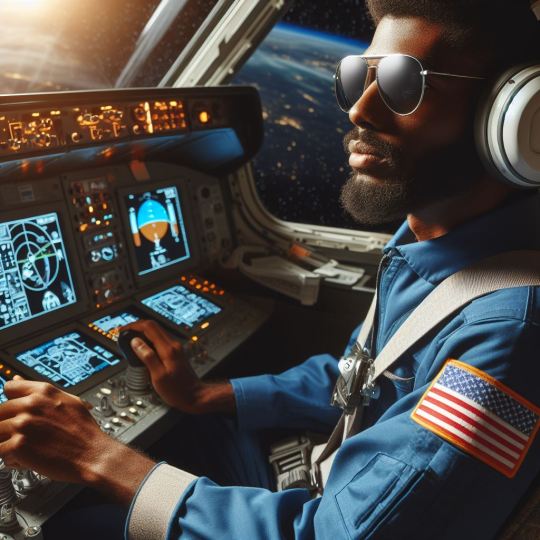



#black history month#blackhistorymonth#africanamericanhistory#dalle3#midjourney#afrofuturism#astronauts#mae jemison#africanamericanhistorymonth#blackinspace
11 notes
·
View notes
Text
Stranded in Space......
So, two astronauts are stranded at the Space station.
So much for NASAS choice of a space partner.
Seems like Elon Musk, aka Space X is now the only game in town.
Boeing has become the equivalent of The Gang Who Couldn't shoot Straight.
Can't build quality aviation "anything", except the B52 bomber.
Can it be fixed? YES, BUT not by NASA.
Go look for Artimus/ NASA to see what a boondoggle looks like. There isn't enough money on the planet to make that program even marginally successful.
The FUTURE of space HAS TO BE TAKEN AWAY FROM NASA and turned over to the private sector for COMMERCIALIZATION NOT MILITARIZATION of space.
The military already uses SpaceX as its primary lifting service.
With all NASAS concern for the safety of its astronauts, is it IMPOSSIBLE for them to pay SpaceX for a rescue mission instead of leaving them until FEBRUARY, 2025?
Just asking........
#capitalism#democrats#republicans#democracy#us politics#donald trump#government#immigration#politics#reading
4 notes
·
View notes
Text
The Polaris Dawn astronauts have exited the SpaceX Dragon capsule to expose themselves to the void of space while 435 miles above Earth.
Early Thursday, the crew began final preparations to unlatch the hatch of the spacecraft they rode to orbit on Tuesday to conduct the first-ever commercial spacewalk. SpaceX, which is operating the mission and designed the suits specially for the maneuver, provided live coverage on social media site X.
The entire operation, which began around 6 a.m., took about two hours.
The Polaris Dawn crew began preparing for the daring maneuver almost immediately after arriving in orbit for a five-day mission to test SpaceX technology needed for future crewed missions to the moon and Mars.
Billionaire Jared Isaacman leading mission
Billionaire entrepreneur Jared Isaacman – the commander of the mission – and SpaceX employee Sarah Gillis both exited the SpaceX Dragon to spend about 12 minutes each to perform suit mobility checks.
While mission specialist Anna Menon and pilot Scott “Kidd” Poteet did not exit the spacecraft, they were still exposed to the vacuum of space because the Dragon does not have an airlock. For that reason, the entire cabin was depressurized and all four astronauts were suited up in extravehicular activity (EVA) suits designed by SpaceX to receive oxygen through tethers.
The hatch was opened within 38 minutes of beginning the operation and Isaacman was the first to emerge from the capsule.
"Back at home we have a lot of work to do, but from here Earth sure looks like a perfect world," Isaacman said as the ground crew on the livestream burst into applause.
Gillis followed him shortly after, where she wiggled around in the dark expanse to test the spacesuit before returning to the cabin and closing the hatch.
Crew make 1st private spacewalk
Until now, spacewalks have only ever been the purview of government spacefarers such as NASA astronauts and Russian cosmonauts. What's more, the maneuvers most often take place in craft with airlocks.
Not only have spacewalks historically not been commercial endeavors, but those who have taken part have done so in spacesuits regulated by a government space agency.
This time it is all being done by SpaceX. The purpose of the operation was to test the suit's capabilities, which the rocket company developed for this flight.
What is Polaris Dawn?
Polaris Dawn is the first of three human spaceflights under the Polaris Program, all of which are intended to test SpaceX technologies needed to carry humans deep into the cosmos.
On the day of Tuesday's launch, the SpaceX Dragon capsule traveled further into space than any spacecraft has gone in more than 50 years, surpassing the height reached by NASA's Gemini 11 in the 1970s, SpaceX said.
Isaacman, founder of internet company Shift4 Payment, is the only member of the Polaris Dawn crew to have been to outer space before. Menon and Gillis are also now not only the the first SpaceX employees to travel to space, but have traveled higher than any other women in history.
Before and after the spacewalk, the crew is conducting nearly 40 scientific experiments – many of which aim to understand the human body's reaction to long spaceflights as NASA and other space agencies set their sights on destinations like Mars. They are scheduled to return to Earth Sunday.
5 notes
·
View notes
Text
From the Moon’s south pole to an ice-covered ocean world, several exciting space missions are slated for launch in 2024
by Ali M. Bramson, Assistant Professor of Earth, Atmospheric, and Planetary Sciences at Purdue University
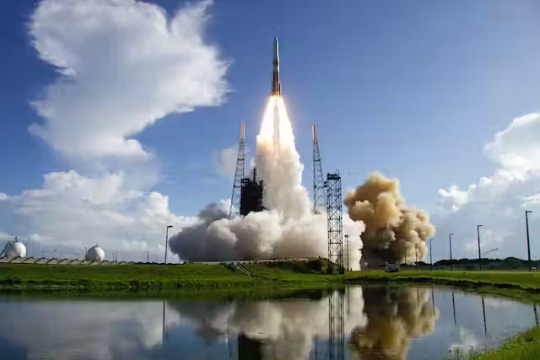
The year 2023 proved to be an important one for space missions, with NASA’s OSIRIS-REx mission returning a sample from an asteroid and India’s Chandrayaan-3 mission exploring the lunar south pole, and 2024 is shaping up to be another exciting year for space exploration.
Several new missions under NASA’s Artemis plan and Commercial Lunar Payload Services initiative will target the Moon.
The latter half of the year will feature several exciting launches, with the launch of the Martian Moons eXploration mission in September, Europa Clipper and Hera in October and Artemis II and VIPER to the Moon in November – if everything goes as planned.
I’m a planetary scientist, and here are six of the space missions I’m most excited to follow in 2024.
1. Europa Clipper
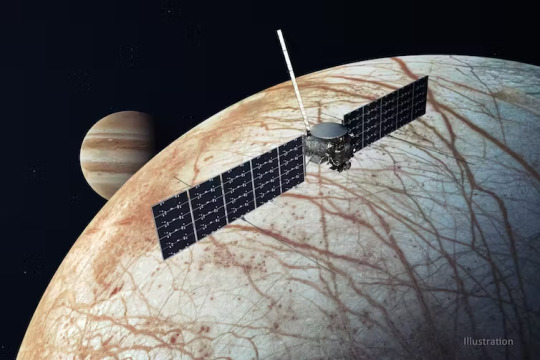
NASA will launch Europa Clipper, which will explore one of Jupiter’s largest moons, Europa. Europa is slightly smaller than Earth’s Moon, with a surface made of ice. Beneath its icy shell, Europa likely harbors a saltwater ocean, which scientists expect contains over twice as much water as all the oceans here on Earth combined.
With Europa Clipper, scientists want to investigate whether Europa’s ocean could be a suitable habitat for extraterrestrial life.
The mission plans to do this by flying past Europa nearly 50 times to study the moon’s icy shell, its surface’s geology and its subsurface ocean. The mission will also look for active geysers spewing out from Europa.
This mission will change the game for scientists hoping to understand ocean worlds like Europa.
The launch window – the period when the mission could launch and achieve its planned route – opens Oct. 10, 2024, and lasts 21 days. The spacecraft will launch on a SpaceX Falcon Heavy rocket and arrive at the Jupiter system in 2030.
2. Artemis II launch

The Artemis program, named after Apollo’s twin sister in Greek mythology, is NASA’s plan to go back to the Moon. It will send humans to the Moon for the first time since 1972, including the first woman and the first person of color. Artemis also includes plans for a longer-term, sustained presence in space that will prepare NASA for eventually sending people even farther – to Mars.
Artemis II is the first crewed step in this plan, with four astronauts planned to be on board during the 10-day mission.
The mission builds upon Artemis I, which sent an uncrewed capsule into orbit around the Moon in late 2022.
Artemis II will put the astronauts into orbit around the Moon before returning them home. It is currently planned for launch as early as November 2024. But there is a chance it will get pushed back to 2025, depending on whether all the necessary gear, such as spacesuits and oxygen equipment, is ready.
3. VIPER to search for water on the Moon
youtube
VIPER, which stands for Volatiles Investigating Polar Exploration Rover, is a robot the size of a golf cart that NASA will use to explore the Moon’s south pole in late 2024.
Originally scheduled for launch in 2023, NASA pushed the mission back to complete more tests on the lander system, which Astrobotic, a private company, developed as part of the Commercial Lunar Payload Services program.
This robotic mission is designed to search for volatiles, which are molecules that easily vaporize, like water and carbon dioxide, at lunar temperatures. These materials could provide resources for future human exploration on the Moon.
The VIPER robot will rely on batteries, heat pipes and radiators throughout its 100-day mission, as it navigates everything from the extreme heat of lunar daylight – when temperatures can reach 224 degrees Fahrenheit (107 degrees Celsius) – to the Moon’s frigid shadowed regions that can reach a mind-boggling -400 F (-240 C).
VIPER’s launch and delivery to the lunar surface is scheduled for November 2024.
4. Lunar Trailblazer and PRIME-1 missions

NASA has recently invested in a class of small, low-cost planetary missions called SIMPLEx, which stands for Small, Innovative Missions for PLanetary Exploration. These missions save costs by tagging along on other launches as what is called a rideshare, or secondary payload.
One example is the Lunar Trailblazer. Like VIPER, Lunar Trailblazer will look for water on the Moon.
But while VIPER will land on the Moon’s surface, studying a specific area near the south pole in detail, Lunar Trailblazer will orbit the Moon, measuring the temperature of the surface and mapping out the locations of water molecules across the globe.
Currently, Lunar Trailblazer is on track to be ready by early 2024.
However, because it is a secondary payload, Lunar Trailblazer’s launch timing depends on the primary payload’s launch readiness. The PRIME-1 mission, scheduled for a mid-2024 launch, is Lunar Trailblazer’s ride.
PRIME-1 will drill into the Moon – it’s a test run for the kind of drill that VIPER will use. But its launch date will likely depend on whether earlier launches go on time.
An earlier Commercial Lunar Payload Services mission with the same landing partner was pushed back to February 2024 at the earliest, and further delays could push back PRIME-1 and Lunar Trailblazer.
5. JAXA’s Martian Moon eXploration mission
youtube
While Earth’s Moon has many visitors – big and small, robotic and crewed – planned for 2024, Mars’ moons Phobos and Deimos will soon be getting a visitor as well. The Japanese Aerospace Exploration Agency, or JAXA, has a robotic mission in development called the Martian Moon eXploration, or MMX, planned for launch around September 2024.
The mission’s main science objective is to determine the origin of Mars’ moons. Scientists aren’t sure whether Phobos and Deimos are former asteroids that Mars captured into orbit with its gravity or if they formed out of debris that was already in orbit around Mars.
The spacecraft will spend three years around Mars conducting science operations to observe Phobos and Deimos. MMX will also land on Phobos’ surface and collect a sample before returning to Earth.
6. ESA’s Hera mission

Hera is a mission by the European Space Agency to return to the Didymos-Dimorphos asteroid system that NASA’s DART mission visited in 2022.
But DART didn’t just visit these asteroids, it collided with one of them to test a planetary defense technique called “kinetic impact.” DART hit Dimorphos with such force that it actually changed its orbit.
The kinetic impact technique smashes something into an object in order to alter its path. This could prove useful if humanity ever finds a potentially hazardous object on a collision course with Earth and needs to redirect it.
Hera will launch in October 2024, making its way in late 2026 to Didymos and Dimorphos, where it will study physical properties of the asteroids.
7 notes
·
View notes
Text
technically impossible but what about Hob and Dream’s future meetings?
2089: Hob tells Dream about the climate change, how forest have kept burning, how water has kept raising, forcing people to leave entire cities behind, how resources have become scarce and everyone kept clinging to what they had... But does Hob want to give up on living? No, of course no, because it can’t end up like that! Because there are still people trying to change the things (he is). Because he wants to see what comes next!
2189: Hob tells Dream about all those new inventions - new ways to produce and stock energy of course, but not only! New treatments for cancer patients, new archaeological findings challenging past beliefs, new cake recipes (that still mostly use the same few ingredients). Also there are people living on the moon now! (and they have nothing to do with SpaceX!) The planet is slowly healing and the horizon seems to lighten. Is everything perfect?No, of course not. It never was. But it is worth witnessing all the same! So yes, Hob still wants to live!
2289:Hob tells Dream about humans travelling in space. With this new propulsion system they can now reach 2/3 of the speed of light. A spaceship landed on Pluto a few years ago and several missions out of the solar system are already scheduled! Hob would like to join one, some day, but it won’t be easy... Also, can Dream believe that meanwhile, on earth, new insect, bird and fish species are still being discovered on a regular basis? Oh, and flares trousers are fashion again apparently... Hence, with space and all the mysteries our planet still holds, there is just so much to discover, there is just so much left to live!
2389: Hob tells Dream about the new lifeforms discovered on distant planets: microbes, seaweeds, plants...even a few animal species (Hob saw a cute potato looking one with his own eyes). Because yes, Hob Gadling, medieval peasant, has set foot on an exoplanet!! He declined participating in a new mission - his teammates called him crazy - so he could be there for their centennial meeting, but he’s not sad about it: first, he wouldn’t miss their meetings for the universe, secondly, he did actually missed earth. Anyways, spaceships keep getting faster and faster. He wonders what he’ll discover during his next travel... Hob wants to keep living to see it all!
...
Also, if you ask me, they’ve been married all along and kept seeing each other either in the Dreaming or in the “human” world, but they still hold those centennial meetings for sentimental reasons and it’s an occasion for Hob to look back and reflects on the last century...
86 notes
·
View notes
Text
The X from Outer Space
Let's talk about space, poozers! I love space. I'm from space! If humanity manages ta' not go extinct, humanity's future is in space. There ain't no doubt about that.
Good talk! Now lets talk about SpaceX.
Years ago little Elon Musk had a dream: To be a technocratic racist and antisemite obsessed with the letter X like his grandfather (seriously, look it up, the man left the Technocracy Movement cuz it wasn't racist an' capitalist enough fer him, that's how Mother Musk's family ended up in apartheid South Africa).
After little Elon failed his way into a fortune by not inventin' Paypal, he thought, "What if I sabotaged humanity's future ta' usher in a horrifyin' dystopia?" An' SpaceX was born.
SpaceX has exactly one claim to fame: It does a few things and only a few things. Since it only does a few things, it can do 'em repetitively an' cheaply.
See, every NASA mission is bespoke. Even reuseable craft, like the Space Shuttle, had to be adaptable enough for bespoke missions. Each mission is designed from nearly the ground up, an' that's very expensive.
SpaceX, on the other hand, decided ta' build a kinda assembly line ta' do one specific thing. The space station needs cargo? Let's build a cargo hauler that just does that over an' over. Cuz it's the same mission profile, everythin' can be streamlined an' cheaper.
Now, SpaceX clearly didn't come up with the idea of a reusable platform. That's a standard thing in manufacturin'. Ya may be askin', why didn't NASA do that? And the answer's simple. Cuz Congress didn't want NASA to do that. Congress wanted SpaceX to do that. Congress was so impressed with Elon Musk not creatin' Paypal and gettin' fired from CEO for incompetence twice that they went with his idea rather than the organization that had put us on the moon with a shoestring budget.
There were a zillion problems, but one was bigger than the others: SpaceX, like all Musk enterprises, was a complete failure and its rockets blew up. Well, that certainly makes it difficult to be the best at space!
But Elon Musk's buddies and cronies in Congress had a solution: Throw money at him. Rocket blows up? Throw more money. And more. And more. SpaceX would have been bankrupt in 2006 without a single success if Congress hadn't kept throwin' taxpayer money at it.
Why didn't they throw that money at NASA? Well if NASA had designed the assembly line launch platform, which they could have done much easier and cheaper, then the assembly line launch platform would have belonged to a public organization, and thus to the people, instead of belonging to literally the worst human being on the face of the earth.
That's it. That's the only reason. I defy you to find me any legitimate reason. And I'm not talking about Musk bribin' them, that's all part of him being the worst, I'm talkin' legitimate scientific reasons to fund an absolute failure of a company instead of NASA. There ain't none. Capitalism is just evil fer evil's sake sometimes.
Today, SpaceX puts multiple times more space junk into orbit than the entire rest of the world combined. In just six months last year there were over 25,000 near-misses where SpaceX junk almost collided with other spacecraft. Astronomers are havin' trouble seein' through all the junk. Space missions have become astronomically (pun intended) more dangerous.
SpaceX is also a bad partner. Thanks to the Trump-appointed former head a' NASA, the US space agency is dependent on SpaceX. That means the Artemis 2 mission is indefinitely delayed because, surprise surprise, the necessary SpaceX components don't work. SpaceX misses every deadline it sets, which has repercussions for NASA as well. So Musk's incompetence is keepin' us from space exploration.
Sometimes people say that Musk ain't really in charge, that the engineers are. That's a lie. Musk is in charge. Musk wanted Starlink, Musk got Starlink. Musk wanted to mislead Ukraine about Starlink, Musk got it. Musk wanted Starship, well, he ain't gotten Starship yet but he's more than willin' to keep throwin' our money at it until he does. It's all Musk.
There are some very good engineers at SpaceX. And they oughta be ashamed of what they're doin'.
Starship is currently past the phase where it's blowin' up all the time. They've landed one of the boosters successfully. It'll take far longer than Musk says (it always does), but they'll bludgeon their way to a solution eventually.
Provided, of course, we allow 'em to. Provided we keep givin' 'em our public money to fund their failure. Provided we keep supportin' an evil company that is harmin' and destroyin' our future in spaceflight and astronomy by cloggin' up Earth orbit.
If starship explosions don't happen naturally, storebought is fine.
Be safe, poozers, an' keep watchin' the stars.
#SpaceX#Starship#NASA#Artemis#Anticapitalism#Capitalism#ElonMusk#Space#Astronomy#Spaceflight#Futurism#the technocracy movement was wild but somehow grandpa musk was worse than any of them
5 notes
·
View notes
Link
On May 16, 2024, a crowd of more than 500 people gathered at Space Center Houston’s IMAX theater for the Expedition 70 crew debrief and awards ceremony. Crew members from NASA’s SpaceX Crew-7 and Soyuz MS-24 missions shared reflections from their voyage aboard the International Space Station and bestowed well-deserved recognition upon Johnson Space Center employees and partners whose dedication and support contributed to the expedition’s success. A group photo of participants from the Expedition 70 crew debrief and awards ceremony on May 16, 2024, at Space Center Houston’s IMAX theater. Credit: NASA/David DeHoyos The special event featured four Expedition 70 astronauts: Jasmin Moghbeli, Crew-7 commander and Expedition 70 flight engineer, NASA Loral O’Hara, Soyuz MS-24 and Expedition 70 flight engineer, NASA Andreas Mogensen, Crew-7 pilot and Expedition 70 commander, ESA (European Space Agency) Satoshi Furukawa, Crew-7 mission specialist and Expedition 70 flight engineer, JAXA (Japan Aerospace Exploration Agency) NASA astronaut Stephen Bowen kicked off the event by striking the ceremonial bell to complete the 70th voyage to the orbiting laboratory. Johnson Deputy Director Stephen Koerner honored the crew’s achievements. “Through the Johnson Space Center’s Dare | Unite | Explore initiatives, we are called to unite with our partners to complete these bold missions,” said Koerner. “Tonight, we are celebrating the completion of one of those such missions.” NASA’s SpaceX Crew-7 crew inside the vestibule in between the SpaceX Dragon Endurance spacecraft and the International Space Station’s Harmony module. From left are Roscosmos cosmonaut Konstantin Borisov, ESA (European Space Agency) astronaut Andreas Mogensen, NASA astronaut Jasmin Moghbeli, and JAXA (Japan Aerospace Exploration Agency) astronaut Satoshi Furukawa. Credit: NASA The Crew-7 mission was the first in the history of the Commercial Crew Program to have each seat in the Dragon spacecraft occupied by a different international partner. The Expedition 70 crew successfully conducted 286 experiments and received five cargo resupply missions that delivered thousands of pounds of scientific research, supplies, and hardware to the orbital outpost. The astronauts performed numerous science experiments and technology demonstrations, including the first robotic surgery (on simulated tissue) in space. The crew also encountered several other notable firsts. O’Hara and Moghbeli undertook their inaugural spacewalk together, while ESA astronaut Andy Mogensen became the first non-US pilot to fulfill that role on the Dragon vehicle. The crew also welcomed the third private astronaut mission, Ax-3, aboard the orbiting laboratory, along with Marina Vasilevskaya, the first female Belarusian in space as a spaceflight participant. “Even after more than 25 years of operations, we continue to experience exciting firsts aboard station,” said Dana Weigel, program manager for the International Space Station Program. “On behalf of the ISS Program, I want to thank the crew and the ground teams around the world for your passion and commitment to the International Space Station mission. The incredible advancements we make that benefit life here on Earth and inspire future generations are a direct result of your work.” Watch below to recap the Expedition 70 crew members’ unique journey aboard the International Space Station and to celebrate those who helped make the mission a success.
2 notes
·
View notes
Text

Let's Explore a Metal-Rich Asteroid 🤘
Between Mars and Jupiter, there lies a unique, metal-rich asteroid named Psyche. Psyche’s special because it looks like it is part or all of the metallic interior of a planetesimal—an early planetary building block of our solar system. For the first time, we have the chance to visit a planetary core and possibly learn more about the turbulent history that created terrestrial planets.
Here are six things to know about the mission that’s a journey into the past: Psyche.

1. Psyche could help us learn more about the origins of our solar system.
After studying data from Earth-based radar and optical telescopes, scientists believe that Psyche collided with other large bodies in space and lost its outer rocky shell. This leads scientists to think that Psyche could have a metal-rich interior, which is a building block of a rocky planet. Since we can’t pierce the core of rocky planets like Mercury, Venus, Mars, and our home planet, Earth, Psyche offers us a window into how other planets are formed.

2. Psyche might be different than other objects in the solar system.
Rocks on Mars, Mercury, Venus, and Earth contain iron oxides. From afar, Psyche doesn’t seem to feature these chemical compounds, so it might have a different history of formation than other planets.
If the Psyche asteroid is leftover material from a planetary formation, scientists are excited to learn about the similarities and differences from other rocky planets. The asteroid might instead prove to be a never-before-seen solar system object. Either way, we’re prepared for the possibility of the unexpected!

3. Three science instruments and a gravity science investigation will be aboard the spacecraft.
The three instruments aboard will be a magnetometer, a gamma-ray and neutron spectrometer, and a multispectral imager. Here’s what each of them will do:
Magnetometer: Detect evidence of a magnetic field, which will tell us whether the asteroid formed from a planetary body
Gamma-ray and neutron spectrometer: Help us figure out what chemical elements Psyche is made of, and how it was formed
Multispectral imager: Gather and share information about the topography and mineral composition of Psyche
The gravity science investigation will allow scientists to determine the asteroid’s rotation, mass, and gravity field and to gain insight into the interior by analyzing the radio waves it communicates with. Then, scientists can measure how Psyche affects the spacecraft’s orbit.

4. The Psyche spacecraft will use a super-efficient propulsion system.
Psyche’s solar electric propulsion system harnesses energy from large solar arrays that convert sunlight into electricity, creating thrust. For the first time ever, we will be using Hall-effect thrusters in deep space.
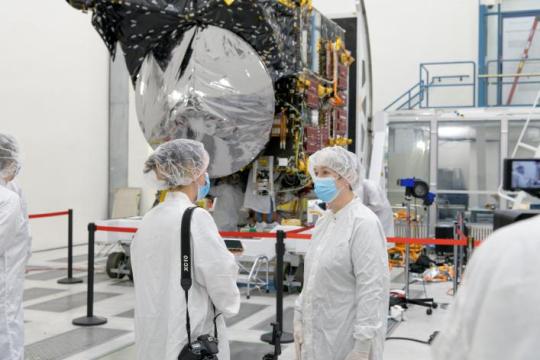
5. This mission runs on collaboration.
To make this mission happen, we work together with universities, and industry and NASA to draw in resources and expertise.
NASA’s Jet Propulsion Laboratory manages the mission and is responsible for system engineering, integration, and mission operations, while NASA’s Kennedy Space Center’s Launch Services Program manages launch operations and procured the SpaceX Falcon Heavy rocket.
Working with Arizona State University (ASU) offers opportunities for students to train as future instrument or mission leads. Mission leader and Principal Investigator Lindy Elkins-Tanton is also based at ASU.
Finally, Maxar Technologies is a key commercial participant and delivered the main body of the spacecraft, as well as most of its engineering hardware systems.
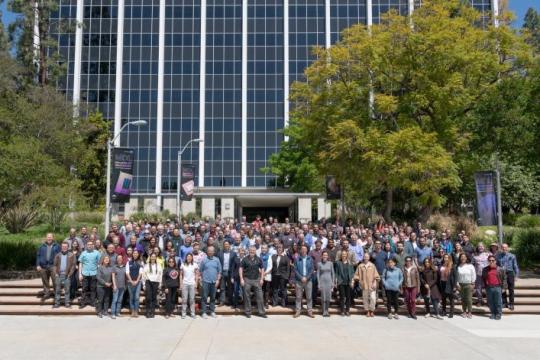
6. You can be a part of the journey.
Everyone can find activities to get involved on the mission’s webpage. There's an annual internship to interpret the mission, capstone courses for undergraduate projects, and age-appropriate lessons, craft projects, and videos.
You can join us for a virtual launch experience, and, of course, you can watch the launch with us on Oct. 12, 2023, at 10:16 a.m. EDT!
For official news on the mission, follow us on social media and check out NASA’s and ASU’s Psyche websites.
Make sure to follow us on Tumblr for your regular dose of space!
#Psyche#Mission to Psyche#asteroid#NASA#exploration#technology#tech#spaceblr#solar system#space#not exactly#metalcore#but close?
2K notes
·
View notes
Text
The Starfire Identity Crisis/SPN Fandom Witch Hunt
Oh boy, what a turn of events that has been going on here on Tumblr, IG, etc. I see that there's been some girl on girl crime going on here, perhaps some of which I did partake in clearly but did not hide unlike some people here. There's been so called imposters posing as a girl named Jenna working at SpaceX who went under the name @Starfire876 (then @Starfirelove5 and then @Starfirelove7 before she ultimately deactivated her account). It also seems my initial "dear mistress" post has been taken out of context by some people who decided to started calling me a liar (looking at you @hologramcowboy) because my post AND the ask both were taken out of a literal point of view by others, not so much from the point of view of WHY this ask was sent in. By the way, nice job showing her screenshots that clearly have MY name in the hyperlink at the top and with it, containing the background image that's awful distinctive and unique to MY PAGE. May be this was done as a way to get more positive notes YOUR way and more hate coming my way? Also, you and others named her directly, not I. Plus, why are you trying SO hard to figure out who Starfire is? Good job trying to "keep this fandom safe" in your own words to me, along with trying to pin Starfire's identity on my friend (who I can actually verify is NOT Starfire as I'll explain in this post why), and being frankly cruel about it. Nah girl, you ain't on a mission to help keep this fandom safe: you are on a witch hunt and are actually being cruel about it. Go back and look at the things you've said publicly and in PMs in recent months. Some self-reflection might just do you some good. Were people including yourself NOT talking about the bullying certain individuals in the fandom were partaking in within certain social circles? Hmm, you might want to take a good look in the mirror...
For future reference, take more care to actually review potential identifiers in your screenshots, asks, etc. and actually think about the consequences of such before you go on. It seems you and Anon are in cahoots to pin some things on certain individuals when reality is both of you chose to reveal this woman's identity. You "Anon" should've NEVER sent me that ask (because I'm sure you're gonna read this), let alone with the curious timing of this woman eliminating that already curious Austin post within mere hours of you sending me this ask. YOU contributed to this, quit trying to absolve yourself of any responsibility. "Stay off the blogs"... may be these words might ring a bell coming from someone you know?
Given the tizzy that has been stirred up by Starfire "posing" as a girl named Jenna, I can understand the negative sentiment coming my way. I understand why I am being called a liar given this imposter business. Heck, I've heard of some people believing Starfire and I are one and the same. Again, I understand this sentiment but I will say I've been attached to this same screenname for well over 13 years on many social media websites. I will say this: I NEVER post things to be a liar or to be deceitful. I post things I believe to be true ALWAYS period. I withheld the original ask out of safety concerns, as I believe it contained a lot of identifiers. Afterall, she didn't want people to be "sicced" on her. I apologize to people for feeling deceived and misled. I will say however that calling me a liar because of choosing to read it only from a literal point of view is frankly a direct attack on my character.
I was not and never will be a popular blogger here on Tumblr period. I care writing about spiritual topics, such as dream walking, dream interpretation, divination, deities, the astral planes, etc. Sometimes this crosses over to the show Supernatural, as I've written several posts before giving an explanation of what's true versus what's not on the show's depictions of things. And oh man, I swear I would SO love to talk about things like psychology, particularly forensic psychology. If I could go back in time and change career paths at a younger age, I so would've become a criminal psychologist. Plenty of people here clearly take things at face value when it comes to people's claims. I for many reasons do not. Again this is somewhat for the next post...
Bottom line is, my blog will never be popular and I know it. I'm okay with that. As long as I get to share my experiences and enlighten even a few people who may have had some experiences they can't explain, that's good enough for me. I've gotten plenty of "hateful" asks telling me things like I need to take medications for "talking to imaginary beings". I don't bother with those asks because they're a waste of my time period. The topics I am passionate about don't even coincide with this "mistress" business. I'm NOT a celebrity gossip column, never intended to be. Before I ever got the ask I did, I wrote about these things in such a vague context that maybe a handful of people knew who I could be talking about. I wrote about them with relation to what my tarot readings, pendulum dowsing readings, etc. have said and that's it. If I NEVER got this ask along with the funny timing of when certain things transpired on this woman's page and what's happening in Jensen's life and such simultaneously, I would've just probably stopped mentioning it altogether actually not too long before I got that ask.
When Starfire initially brought up to me her "identity has been stolen" storyline, this was starting around 9/10 or so. I myself found this to be awful suspicious but as always, I chose to give the benefit of the doubt and let her explain herself. It's interesting because she went on to rename herself Starfirelove5 not long after this whole thing went down. I ended up telling her I think it's cool she picked the number 5 because it's my favorite number. Funnily enough, not long after that she went on to change it to 7. She even went on to start taking things I told her and eventually made a twist of them. She tried to make certain traits of mine and such as if they were hers. And then to go on changing her screenname to have the same number of characters as mine, making a screenname that sounds an awful lot like mine and even containing the same number in it? Come on....
I dived into that girl's entire KNOWN LinkedIn and Facebook profiles, and a potentially linked Twitter account. I looked through ALL of her public posts on Facebook and LinkedIn because I got curious. I can 100% tell you for a fact this girl and my friend are NOT one and the same. Their interests are quite different, despite their personalities somewhat similar, and even their writing styles sharing similarities (frankly many people write somewhat like they do). It's also quite funny how many of the photos "Jenna" (or was it Jenna?) sent me were NOT readily available on the public side of her social media profiles. I mean unless someone wants to tell me her account was somehow hacked? I am also curious as to how she found out "someone" was "imposing" as her. Also why this timing NOW, given what's going on now?
I can tell you that the girl some of you are trying to say is Starfire is warm-hearted, caring, genuine and one of my favorite people to talk to period. She's shown me plenty of videos and photos of herself. She works in the humble hospitality industry and frankly has enough on her plate to not even worry about imposing as other people, let alone for the "sole purpose of spreading this ridiculous agenda" as some people put it (paraphrasing here). Starfire on the other hand barely spoke of her personal life, came across pretty aloof, and everything was just a bit too perfect. Heck, she even made up quite a few lies about my friend and for what, to make herself sound more relevant or charitable or something?
Dunno, your guess is as good as mine. I'm quite curious with this being said... What is this CLEAR proof my friend and Starfire are one and the same, hmm? Where is it outside of "writing styles match"? Did you get a chance to get to know both her and Starfire for months now? Nah, I didn't think so. If she really wanted to be an imposter hiding behind someone who frankly looks more like a diva than herself, why would she reveal her real self to anyone? Why would someone working in the hospitality industry and trying to make ends meet have enough care in the world to make several "sock accounts" for this purpose? Hmm....
8 notes
·
View notes